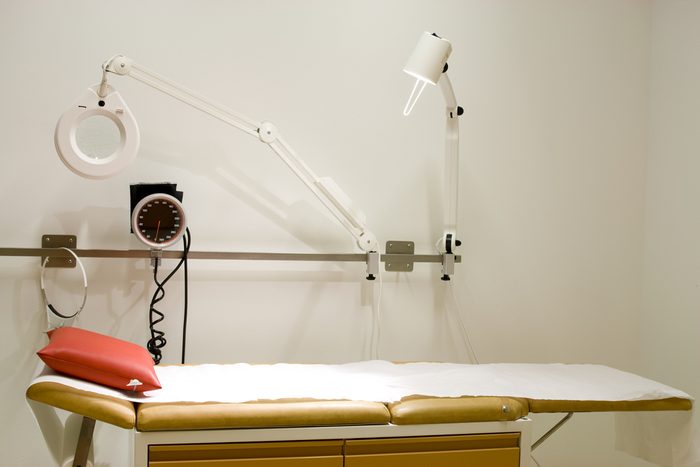
How to save money on health insurance
Trimming the cost of your health insurance without sacrificing tons of coverage is a challenge. It is possible to get affordable medical care and lower your health insurance costs if you take the following advice from these experts.

Shop around
Like most things in life, when it comes to health care plans, it pays to do your research and compare multiple plans before settling on one. From HMOs to PPOs, the one that works for you based on your own needs is the one you want, says Gail Trauco, nurse and patient rights advocate. It’s important to know what the differences between plans are. For example, “You must decide if you would like the option to choose your physician (which you need a PPO to do) or if you are comfortable with an HMO, where the physician is on staff at the health maintenance organization.” She also suggests that working with an insurance broker to guide you in these decisions can help.

Opt for a higher deductible
Yes, choosing the high-deductible plan can be risky—after all, if something catastrophic happens, you could be hit with huge out-of-pocket costs. But, according to Kelsey Allan from TermLife2Go, “if you are relatively healthy and don’t anticipate lots of doctor visits in a year, you can increase your deductible in exchange for a lower premium. That can save a lot of money.”

Use a Health Savings Account (HSA)
An HSA is one of the health care terms you need to know. “HSA-eligible health plans can save you a bundle,” encourages Sande Drew of eHealthInsurance.com. The main draw is that they’re tax-deductible so not only does the money in your account grow tax-free, you can also withdraw it without paying taxes on it. Drew adds that the best way to take advantage of the tax break is by adding to your account regularly—you never know when you’ll need those funds so best to be prepared.

Choose the right places to get care
Running to the emergency room every time you need after-hours care might be draining your wallet. The ER should be your last resort—consider more affordable options like urgent care clinics or even telemedicine. You may want to research a bit beforehand—prices can vary between similar facilities. Andrea Woroch, a personal finance expert, shares that: “By opting for a stand-alone radiology and surgery center, you’re looking at big savings. Your physician may also work at multiple hospitals or surgery centers, so ask for assistance to shop around for the best price.” (Don’t miss these 50 hospital secrets.)

Go with generic
Though skimping on healthcare feels foolish, paying a premium for name-brand medication when a less expensive generic is available would be ill-advised. The FDA requires that both prescription and over-the-counter generics be identical in dose, strength, safety, and efficacy. Meanwhile, the generic version will save you between 30 to 50 percent, even on the most expensive prescription drugs in America. If, for example, you are prescribed Zocor for high cholesterol, a month’s supply of the prescription name-brand drug will cost approximately $175, while the generic version will run you $70. Going generic for this drug will save $1,260 a year! Some drug prices are out of control.

Enroll in a wellness incentive
“Some companies will offer a lower premium to employees who participate in wellness challenges or check off certain tasks for preventative health,” explains Kelsey Allan, an insurance expert at TermLife2Go. “You might get free coverage just by getting in a certain number of steps, for example.” (If you join one of these incentive programs, this list of 35 healthy living hacks to get in shape will help you ace the screening.)

Pay at the right time
Most people wait to pay until after a medical procedure like surgery or hospitalization. But you could be missing out on lower hospital bills, says Michael Foguth of Foguth Financial Group. “If you already have coverage and you have a procedure that is coming up, ask about pre-paying or paying in-full to receive a discount,” he suggests.

Think twice before agreeing to tests
Take it from Nicole Rochester, MD, of Your GPS Doc, who was handed a $600 bill for a series of tests that her insurance company later deemed not medically necessary—asking questions is key: “When your doctor tells you she wants to order lab tests, X-rays, CT scans, or MRI scans, always ask what she is looking for and if the test is absolutely necessary. Never decline necessary medical tests based on cost, but when faced with this question, some doctors will choose to narrow their focus and take more of a step-wise approach.”

Browse off-exchange options
Looking for health insurance on government exchanges isn’t enough if you want to make sure you’re getting the most bang for your buck. Drew warns you won’t see all that is available to you: “The government-run health insurance exchange in your state will show you the plans eligible for purchase with a government subsidy in your area. But if you want to make sure you’ve seen all your options, be sure to compare plans and prices at a private online health insurance marketplace, too, like eHealth.com. Private marketplaces can often help you enroll in subsidy-eligible plans while also showing you Obamacare-compliant plans not available through government sites.” Some states offer better health care options than others.

Consider using a share
There’s power in numbers—which is why health sharing plans are popular. Essentially, you join with other individuals and help pay for each other’s medical expenses. “Often these companies will require a certain level of health prior to joining, but if one does access health insurance through one of these association-like platforms, premiums can range from as much as 50 percent less than the traditional health insurance market,” notes Seth Denson, co-founder of GDP Advisors.

Think outside the traditional health insurance
When it comes to your healthcare, the options today may seem endless. Karen Frost, Vice President of Health Strategy and Solutions at Alight Solutions, explains, “Many new models being introduced in the market are targeted toward improving patient care (ACOs, Integrated Health models like Geisinger or Kaiser, Centers of Expertise). If your doctors are in the network, it’s an easy choice that could save money both in premiums and as you use care.” (These are the health mistakes doctors wish you would stop making.)

Negotiate, negotiate, negotiate
Did you know that almost eight out of 10 medical bills have some type of error? That’s all the proof you need to go through each bill with a fine-toothed comb. “It pays to ask for the full bill and check it for inaccuracies,” advises Woroch. Do the same with the explanation of benefits from your health insurance agency. If you notice something doesn’t look right, call your insurance provider and ask questions.” She also recommends Co-Patient, a website that reviews your bills for errors and works to get them resolved.

Re-evaluate every year
You might be tempted to adopt a “set it and forget it” mindset toward your health insurance, but that’s not the wisest approach. Kim Buckey of DirectPath cautions not to automatically roll over the same coverage from year to year as your situation (and premiums) may have changed since the last time you checked in on your plan. And on the topic of evaluations, do these 11 home health checks while you’re at it.